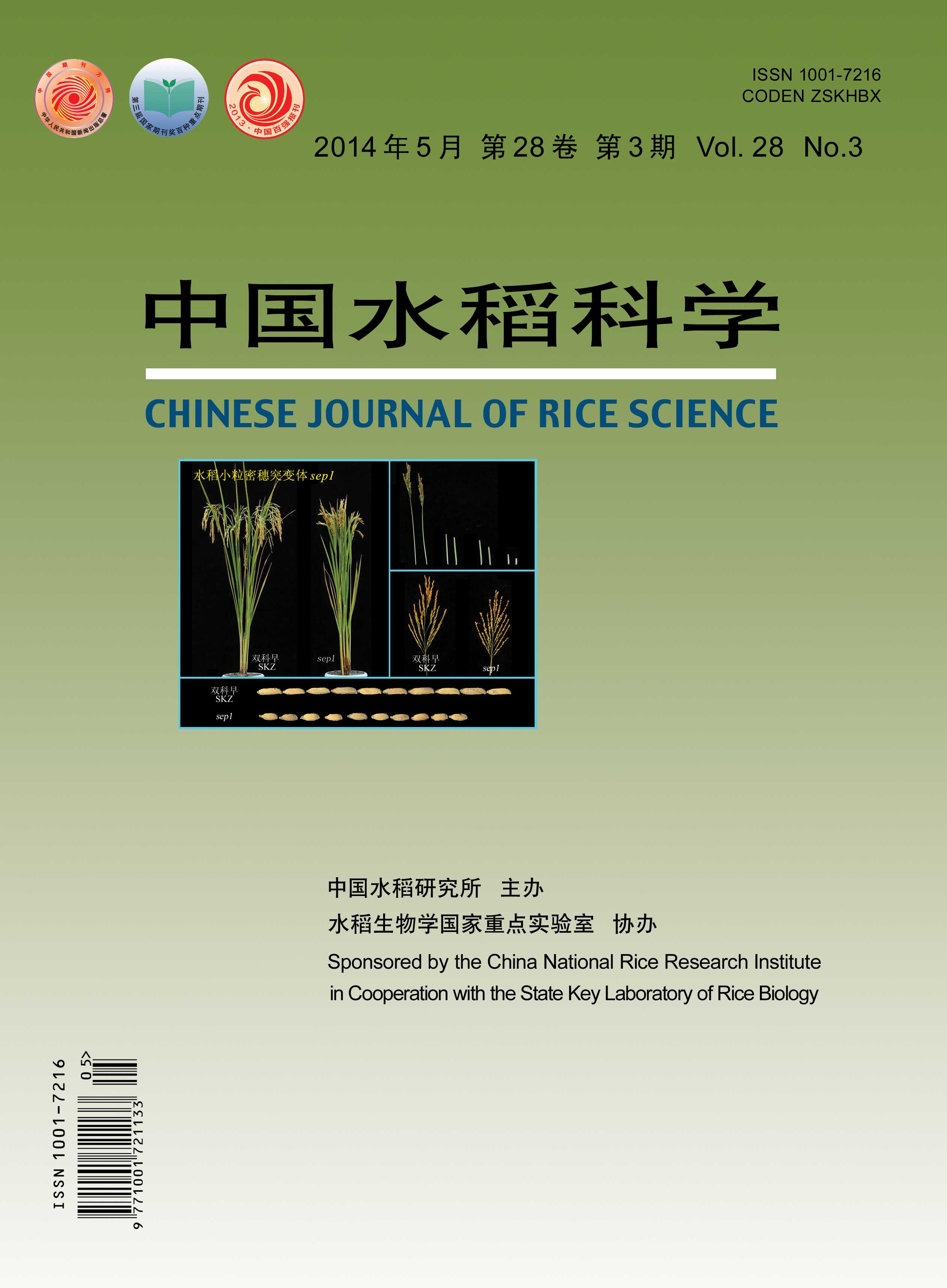|
|
Difference in Growth Duration and Utilization of Temperature and Solar Radiation Between indica and japonica Super Rice in the Lower Yangtze and Huaihe River Valley
GONG Jinlong, XING Zhipeng, HU Yajie, ZHANG Hongcheng*, DAI Qigen, HUO Zhongyang, XU Ke, WEI Haiyan, GAO Hui
2014, 28(3):
267-276.
DOI: 10.3969/j.issn.1001-7216.2014.03.006
In order to reveal the difference in growth duration and utilization of temperature and solar radiation between indica and japonica super rice, a field experiment was conducted with five main representative super hybrid indica combinations and five conventional japonica super rice varieties as materials in the ricewheat cropping areas. The main growth stages, dry matter accumulation, effective accumulated temperature, production efficiency of temperature, photosynthetically active radiation and solar energy utilization were analyzed systematically. Results showed that, the growth processes of japonica rice in the field were later than indica rice, 16.2 days later for rice maturity and harvest time. Grain filling stage of japonica rice was significantly longer than that of indica rice, with an increasing rate of 2582%. Compared with indica rice, japonica rice had strong adaptability to low temperature, which was beneficial for prolonging heading and grain filling appropriately, lengthening grain filling and growth duration, and increasing the utilization of temperature and solar radiation in late autumn. Japonica rice had significantly higher grain yield, biological yield, grain yield per day, and growth duration, effective accumulated temperature, photosynthetically active radiation and solar energy utilization of the whole growth duration, and No. of days, effective accumulated temperature and photosynthetically active radiation of the major growth duration, and production efficiency of temperature from heading to maturity, and dry matter accumulation and solar energy utilization from jointing to maturity, while grain filling rate and production efficiency of temperature of the critical period from sowing to heading and the whole growth stages, and dry matter accumulation and solar energy utilization from sowing to jointing followed an opposite tendency accordingly. Correlation analysis showed that, grain yield of rice was found to be significantly positively associated with growth duration, grain yield per day and grain filling stage, while significantly negatively related to grain filling rate. Moreover, biological yield was highly significantly correlated with effective accumulated temperature, photosynthetically active radiation and solar energy utilization of the whole growth duration. However there was a insignificantly negative correlation between biological yield and production efficiency of temperature of the whole growth duration. Therefore, based on stabilizing and raising the utilization of temperature and solar radiation, grain yield per day and grain filling rate, the increment of effective accumulated temperature and photosynthetically active radiation through lengthening growth duration, especially for grain filling, could increase periodic dry matter accumulation and biological yield, which was one of important approaches and characteristics of high productivity of japonica rice.
|

